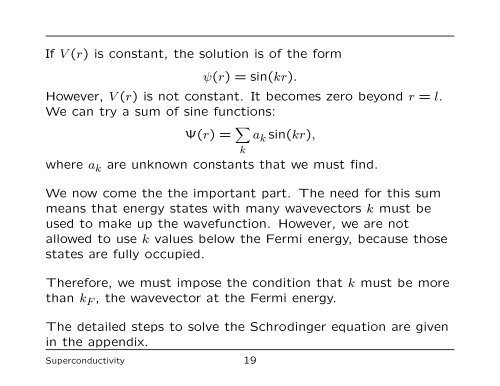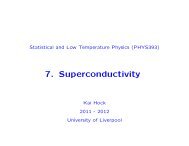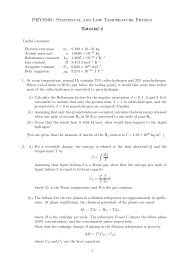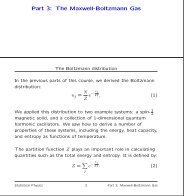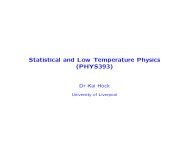The Nature of the Cooper Pair - University of Liverpool
The Nature of the Cooper Pair - University of Liverpool
The Nature of the Cooper Pair - University of Liverpool
You also want an ePaper? Increase the reach of your titles
YUMPU automatically turns print PDFs into web optimized ePapers that Google loves.
If V (r) is constant, <strong>the</strong> solution is <strong>of</strong> <strong>the</strong> form<br />
ψ(r) = sin(kr).<br />
However, V (r) is not constant. It becomes zero beyond r = l.<br />
We can try a sum <strong>of</strong> sine functions:<br />
Ψ(r) = �<br />
ak sin(kr),<br />
where a k are unknown constants that we must find.<br />
k<br />
We now come <strong>the</strong> <strong>the</strong> important part. <strong>The</strong> need for this sum<br />
means that energy states with many wavevectors k must be<br />
used to make up <strong>the</strong> wavefunction. However, we are not<br />
allowed to use k values below <strong>the</strong> Fermi energy, because those<br />
states are fully occupied.<br />
<strong>The</strong>refore, we must impose <strong>the</strong> condition that k must be more<br />
than k F , <strong>the</strong> wavevector at <strong>the</strong> Fermi energy.<br />
<strong>The</strong> detailed steps to solve <strong>the</strong> Schrodinger equation are given<br />
in <strong>the</strong> appendix.<br />
Superconductivity 19


